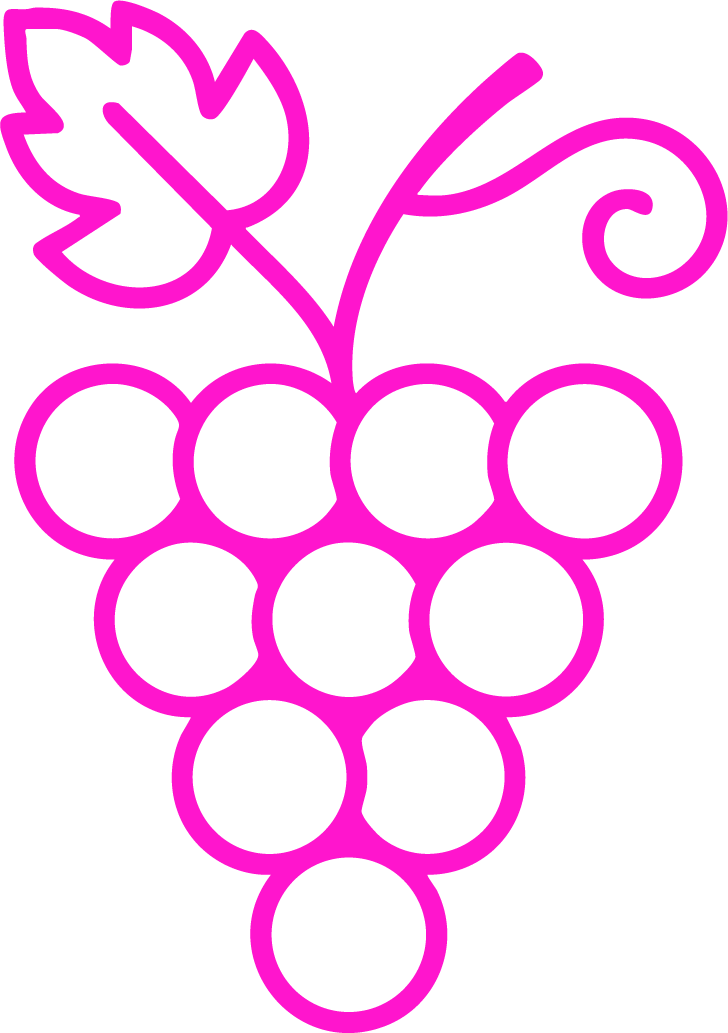Viognier
🔊 Pronunciation: vee-own-yay
🔍 Quick Summary
Viognier is a lush, aromatic white grape known for its floral perfume, rich texture, and stone fruit flavors—once nearly extinct, now a global favorite for expressive white wines.
📜 History
Origin: Believed to have originated in the 1st–3rd century in the Northern Rhône, France — its ancestry is debated, but it’s genetically related to Syrah and Freisa.
Roman roots: Thought to have been brought by Romans via the Rhône River trade routes.
Almost vanished: By the 1960s, fewer than 35 acres remained in Condrieu due to low yields and disease.
Revived in the 1980s–90s: Global interest and New World plantings saved it from extinction.
Modern comeback: Now embraced worldwide for its bold, aromatic profile.
🧠 What to Know
Viognier is not your average white grape—it’s heady, textured, and often misunderstood.
Aromatic bomb: Known for honeysuckle, apricot, and peach on the nose.
Low acid, high texture: Unlike zesty whites, Viognier is lush and rounded.
Tricky to grow: Ripens late and can lose acidity fast—timing is crucial.
Often oaked, sometimes blended: Can be made crisp and fresh or full and creamy.
Signature grape of Condrieu: The Northern Rhône’s white wine jewel.
📍 Where It’s Found
Viognier thrives in warm climates with careful vineyard management.
🇫🇷 Condrieu (Northern Rhône, France) – Granite + Continental = Opulent, floral, age-worthy whites
Cool to moderate | 60–75°F (16–24°C) avg daytime highs
🇫🇷 Languedoc (Southern France) – Clay-limestone + Mediterranean = Riper, rounder, easy-drinking styles
Warm | 75–85°F (24–29°C) avg daytime highs
🇺🇸 California (Central Coast) – Sandy loam + Mediterranean = Tropical, full-bodied expressions
Warm | 70–90°F (21–32°C) avg daytime highs
🇺🇸 Virginia (USA) – Clay + Humid continental = Balanced, perfumed with natural freshness
Warm | 75–85°F (24–29°C) avg daytime highs
🇦🇺 Australia (Eden Valley) – Schist + Continental = Lean yet aromatic with finesse
Warm days, cool nights | 70–85°F (21–29°C) avg highs
👅 Flavor & Style
Viognier wines are lush and floral, with a signature perfume and mouth-coating texture.
Color: Deep golden yellow, especially when ripe or oaked
Aromas & Flavors:
Primary: Apricot, peach, tangerine, honeysuckle, mango
Secondary: Vanilla, cream, baking spice (from oak)
Tertiary: Hazelnut, beeswax, marmalade (with age)
Structure:
Body: Medium to full
Tannin: None (white wine)
Acidity: Low to moderate
Alcohol: Medium to high (13.5–15%)
🛠 Winemaking Notes
Viognier can be made lean or lush depending on harvest date and winemaking choices.
Fermentation style varies: Stainless steel for freshness, oak for creaminess
Malolactic common: Adds richness and softens acidity
Lees aging adds texture: Stirring the lees boosts body and complexity
Can be blended: Often used with Roussanne or Marsanne in Rhône whites
🍽 Food Pairing Ideas
Pairs well with fragrant, rich, and spice-friendly dishes that match its texture.
Savory: Moroccan chicken tagine, lobster with butter sauce, Thai curry
Cheese: Brie, Camembert, triple-cream, Reblochon
Unexpected:Butternut squash ravioli, roast turkey with peach glaze, orange-scented couscous
🔗 Related Topics to Explore
🍇 Roussanne – Viognier’s blending partner for structure and nuttiness
🌍 Malolactic Fermentation – Creamy texture from acid-softening process
🌱 Aromatic Whites – Wines driven by intense floral and fruit aromas
⚗️ Hot Climate Whites – Bold, low-acid wines with tropical tones



